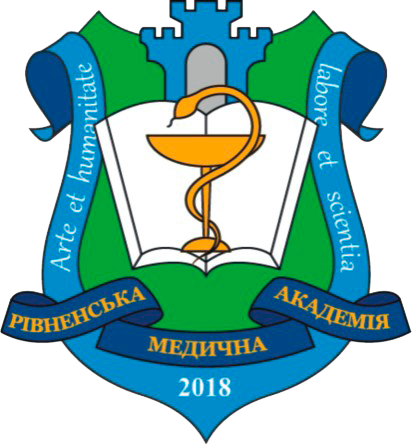THE RELATIONSHIP BETWEEN LIFESTYLE, STRESS LEVEL, AND CHRONIC PAIN IN YOUNG PEOPLE
DOI:
https://doi.org/10.32782/health-2023.4.29Keywords:
acutestress, chronic stress, chronic pain, physical activity, lowerbackpain, neckpainAbstract
Relevance. In recent years, there has been a trendtowards an increase in cases of chronic pain among youngindividuals, leading to a deterioration of theirhealth and quality of life. The issue of a sedentarylifestyle and psychosocialstress is acute in modernsociety, significantlyspreading among the youth, and may, in turn, contribute to the onset of chronic pain. Research on theseissues among youngindividuals is of greatinterest and requires the application of preventiveinterventions to preservehealth and improve quality of life. Objective. To assess the lifestyle, subjectivestress levels, and the prevalence of chronic pain among youngindividuals to identifyat-riskgroups and implementtimelypreventive and therapeuticmeasures. Materials and Methods. A survey of 160 youngindividualsaged 18-35 wasconducted. The PerceivedStressScale (PSS- 10) wasemployed to determine the subjectivestresslevel. The surveycoveredlifestyle, subjectivehealthassessment, and physical activity levels, takingintoaccount the recommendations of the World Health Organization. Results. In assessinglifestyle, it wasfound that 34.6% of respondentslacked adequate levels of physical activity, 28% hadbodymassindex (BMI) valuesoutside the normalrange, and approximately 24.4% spentmorethan 6 hoursperday in a sedentaryposition, indicatingprolongedsitting as a riskfactor for chronic backpain. Sleepdisturbanceswereobserved in 71% of the participants. Most respondents (74%) reported a moderatelevel of stress, while 12% experienced a high level of subjectivestress, and 58% reported chronic pain. Conclusions. The majority of youngindividualsexperience chronic pain, with a prevalence of pain in the lowerback and mixed-character chronic pain. There is an associationbetween chronic pain and lifestylefactorssuch as sedentarywork, physical inactivity, sleepdisturbances, and high levels of stress.
References
Rohleder N. Stress and inflammation – The need to address the gap in the transitionbetweenacute and chronic stresseffects. Psychoneuro end ocrinology. 2019. № 105. Р. 164–171. DOI: https://doi.org/10.1016/j.psyneuen.2019.02.021
Kranner I., Minibayeva, F.V., Beckett R.P. et al. What is stress? Concepts, definitions and applications in seedscience. NewP hytologist. 2010. Vol. 188. № 3. Р. 655–673. DOI: https://doi.org/10.1111/j.1469-8137.2010.03461
Rochette L., Dogon G., Vergely C. Stress: EightDecadesafterItsDefinition by HansSelye: Stress Is the Spice of Life. Brain Sciences. 2023. Vol. 13. № 2. Р. 310. DOI: https://doi.org/10.3390/brainsci13020310
Hori H., Kim Y. Inflammation and post‐traumaticstressdisorder. Psychiatry and clinical neurosciences. 2019. Vol. 73. № 4. Р. 143–153. DOI: https://doi.org/10.1111/pcn.12820
Rohleder N. Stress and inflammation – The need to address the gap in the transitionbetweenacute and chronic stresseffects. Psychoneuro end ocrinology. 2019. № 105. Р. 164–171. DOI: https://doi.org/10.1016/j.psyneuen.2019.02.021
Mavranezouli I., Megnin‐ViggarsO., Daly, C. et al. Research Review: Psychological and psychosocialtreatments for children and young people with post‐traumaticstressdisorder: a networkmeta‐analysis. Journal of childpsychology and psychiatry. 2020. Vol. 61. № 1. Р. 18–29. DOI: https://doi.org/10.1111/jcpp.13094
Buscemi V., Chang W.J., Liston M. B. et al. The role of perceivedstress and life stressors in the development of chronic musculoskeletalpaindisorders: A systematicreview. The Journal of Pain. 2019. Vol. 20. № 10. Р. 1127–1139. DOI: https://doi.org/10.1016/j.jpain.2019.02.008
Smith, P.J., Merwin, R.M. The role of exercise in management of mentalhealthdisorders: an integrativereview. Annualreview of medicine. 2021. № 72. Р. 45–62. DOI: https://doi.org/10.1146/annurev-med-060619-022943
Singh B., Olds T., Curtis R. et al. Effectiveness of physical activity interventions for improving depression, anxiety and distress: an overview of systematicreviews. British journal of sports medicine. 2023. Vol. 57. № 18. 1203–1209. DOI: https://doi.org/10.1136/bjsports-2022-106195
Baik S.H., Fox R.S., Mills S.D. et al. Reliability and validity of the PerceivedStress Scale-10 in HispanicAmericans with English or Spanishlanguagepreference. Journal of heal thpsychology. 2019. Vol. 24. № 5. Р. 628–639. DOI: https://doi.org/10.1177/1359105316684938
Ovdii M.A., Solomakha K.M., Yasynetskyi M.O. A study ofphysicalactivity levels and qualityof life in young adults during the Covid-19 pandemic. Wiadomoscilekarski. 2021.Vol. 74. № 6. Р. 1405–1408.
Bull F.C., Al-Ansari S.S., Biddle S. еt al. World Health Organization 2020 guidelines on physical activity and sedentarybehaviour. British journal of sports medicine. 2020. Vol. 54. № 24. Р. 1451–1462. DOI: https://doi.org/10.1136/bjsports-2020-102955
Jakicic J.M., Kraus W.E., Powell K.E. еt al. Physical activity guidelies advisory committee. Association between Bout Duration of Physical Activity and Health: SystematicReview. Medicine and science in sports and exercise. 2019. Vol. 51. № 6. Р. 1213–1219. DOI: https://doi.org/10.1249/MSS.0000000000001933
Biddle S.J., Asare M. Physical activity and mentalhealth in children and adolescents: a review of reviews.Britishjournal of sportsmedicine. 2011. Vol. 45. № 11. Р. 886–895. DOI: https://doi.org/10.1136/bjsports-2011-090185
Katzmarzyk P.T., Friedenreich C., Shiroma E.J. еt al. Physical inactivity and non-communicable disease burden in low-income, middle-income and high-incomecountries. British journal of sports medicine. 2022. Vol. 56. № 2. Р. 101–106. DOI: https://doi.org/10.1136/bjsports-2020-103640
Pratt M., RamirezVarela A., Salvo D. et al. Attacking the pandemic of physical inactivity: what is holdingusback? British journal of sports medicine. 2020. Vol. 54. № 13. Р. 760–762. DOI: https://doi.org/10.1136/bjsports-2019-101392
Woods J.A., Hutchinson N.T., Powers S.K. et all. The COVID-19 pandemic and physical activity. Sportsmedicine and healthscience. 2020. Vol. 2. № 2. Р. 55–64. DOI: https://doi.org/10.1016/j.smhs.2020.05.006
Peddie M.C., Kessell C., Bergen T., et all. The effects of prolongedsitting, prolongedstanding, and activity breaks on vascularfunction, and postprandialglucose and insulinresponses: A randomisedcrossovertrial. PloSone. 2021. Vol. 16. № 1. e0244841. DOI:https://doi.org/10.1371/journal.pone.0244841
Abdallah C.G., Geha P. Chronic Pain and Chronic Stress: TwoSides of the SameCoin? Chronic stress (ThousandOaks, Calif.). 2017. № 1. 2470547017704763. DOI: https://doi.org/10.1177/2470547017704763
Duo L., Yu X., Hu R. et al. Sleepdisorders in chronic pain and itsneurochemicalmechanisms: a narrativereview. Frontiers in psychiatry. 2023. Vol. 14. 1157790. DOI: https://doi.org/10.3389/fpsyt.2023.1157790





